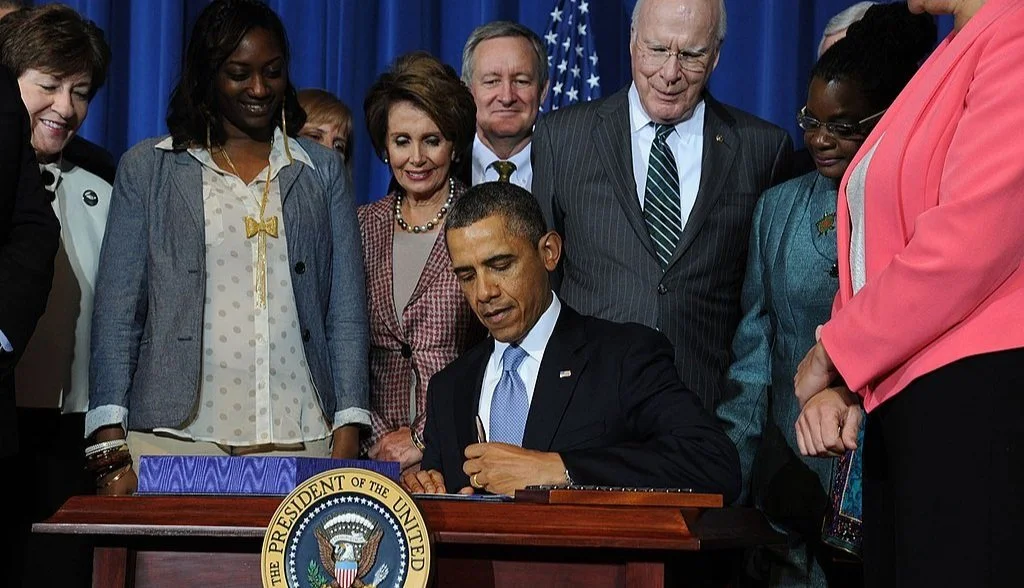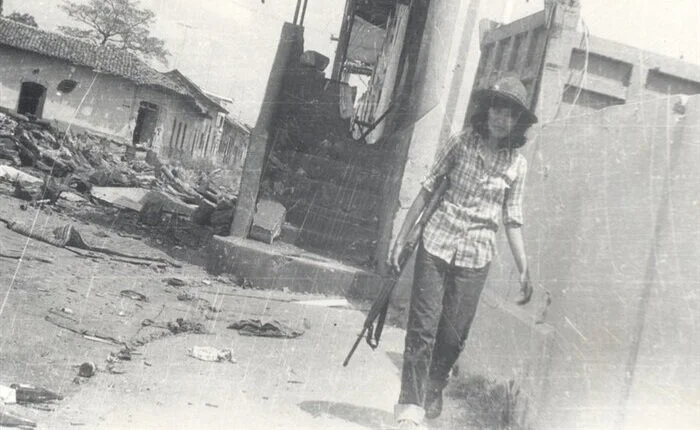What we miss when we blame the individual
Domestic violence and poverty are social problems that are born out of cycles that are nearly impossible to break free from without reimagining current policies and support structures. Unfortunately, many public policies are built on historical framing of such situations as a result of an individual's choice—a choice to not work or a choice to stay in an abusive relationship. This maintains a limited, incredibly privileged understanding of the true nature of domestic violence and poverty, how they are intertwined, and the support individuals need. These rationales have led to clear and lasting demarcations of the "worthiness" of who should receive assistance and what resources a survivor deserves.
Prior to the second-wave feminist movement of the 1970s, domestic violence was considered a private family matter and was constructed as a behavioral manifestation of sex-based biological traits, namely the innate aggressiveness of men and passivity in women. Victim blaming attitudes purported that women brought the abuse on themselves by “asking for it” and should have “known better” than to trigger men’s violent nature. Little regard was given to the difficulty of leaving an abusive relationship.
Later, the second-wave feminist movement focused on dismantling the cultural acceptance of domestic violence as a private family matter by working to create female solidarity as well as to address how the justice system was de facto sanctioning domestic violence with the lack of response to survivors. This feminist agenda, however, was driven by privileged middle-class white women, who often elided other forms of oppressions, such as racism, homophobia, state violence that shaped a survivor’s experience of domestic violence.
Second-wave feminism’s exclusive agenda shaped uniform domestic violence services that assumed a strong government response to domestic violence could “rescue” all survivors while ignoring the harm perpetrated by state power against underserved populations. Assumptions that such social problems came as a result of individual pathologies lay at the root of this agenda. Even as the dialogue moved away from making domestic violence a private family matter, it was still undercut by the belief that if victims did not leave abusive homes, it was personal failing and an individual decision, ignoring the systematic nuances that made breaking the cycles so difficult.
“Second-wave feminism’s exclusive agenda shaped uniform domestic violence services that assumed a strong government response to domestic violence could “rescue” all survivors…”
In 1989, Kimberlé Crenshaw, a legal scholar and critical race theorist, introduced intersectional feminism as an academic construct and sought to contextualize how the oppression of Black women was often sidelined within the feminist movement by white women and within the anti-racist movement by Black men. The purpose of intersectionality was to explain how an individual’s membership in various identity groups influenced their status of oppression or privilege and to contextualize how survivors make strategic decisions within an oppressive system. Thus, it is not a matter of survivors making decisions rooted in pathology but the erasure of the factors that they may consider when making decisions.
Policies that perpetuate the idea that domestic violence is experienced in a universal way decry the many configurations of intimate partner relationships, including co-habitating, dating, non-heterosexuality; the several types of psychological, sexual, and economic abuse; variations of abuse that can include situational couple violence or intimate terrorism; and the fact that women may be the aggressor in mutual combat or self-defense. These policies reinforce the idea that if diverse survivors are not helped by one-size-fits all services then it is due to the survivors’ personal failings and not ineffectual services.
The passage of the Violence Against Women Act (VAWA) in 1994 was the preeminent federal policy to address domestic violence. VAWA allocated substantially greater funds to address domestic violence. Yet, as a component of the 1994 Crime Bill, VAWA mainly focused and funded criminal justice responses to domestic violence, such as mandatory arrest laws, and not on services to support survivors. In fact, the domination of a criminal justice approach to domestic violence has increased adverse outcomes for marginalized survivors. Lower-income, underserved communities are already more likely to be subjected to increased levels of surveillance and coercive interference from state power. Survivors in these communities may delay seeking help until the violence is severe because calling the police is a calculated risk.
VAWA was developed from the one-dimensional concept of domestic violence as a gendered phenomenon and from a privileged perspective. Without integrating an intersectional perspective, VAWA is a myopic representation of how domestic violence is experienced. VAWA articulated that the threat a survivor experiences is only due to being a woman in an abusive relationship with a man, hyper focusing on their immediate personal safety and not how they are harmed by broader oppressions. This continues the simplistic personal responsibility narrative that survivors are only in need of limited and short-term crisis services, such as mental health, legal help, and emergency shelters rather than long-term systematic changes via public policy.
Since VAWA has been reauthorized, its policy response to domestic violence has become more inclusive of people in different identity groups. For example, the reauthorization of VAWA in 2013 provided allotments for sexual minorities and Indigenous survivors. To this day, there are still calls to make the majority of VAWA funds go towards meeting the intersectional needs of survivors instead of approaches focused on individual responsibility.
Poverty has been identified as a social problem for a significantly longer period of time than domestic violence, yet public responses to poverty still provide minimal assistance to individuals and do not address the root cause. Welfare worthiness has long served as a regulatory function in women’s lives. Elizabethan Poor Laws established the criteria for “worthiness” for public welfare and philanthropy, specifically with the Statue of Charitable Uses of 1601, which set the criteria for the term “charitable.” Mimi Abramovitz, a professor of social work, has asserted that the determination for welfare worthiness continues to incentivize women’s adherence to the “family ethic” —a woman married and settled into their proper place in the home, raising children, completing all domestic tasks, and ensuring the emotional wellbeing of the family. This creates a demarcation between which women were worthy of welfare because they had lost their male provider (widows) and those deemed unworthy (unmarried mothers).
The structural constraints of poverty that emphasize the “male breadwinner model” and the “family ethic” are an added burden for domestic violence survivors experiencing poverty. This occurs because the “male breadwinner model” limits women’s ability to work their way out of poverty, while the “family ethic” omits a welfare option for a woman who wants to voluntarily leave an abusive relationship. Patriarchy disempowers them both within the home and within the economy.
“Survivors have been continuously pathologized for their experience of abuse; now is the time for us to take out oppressive structures and hang them out to dry, rather than rinse and repeat.”
In 1935, Aid to Families with Dependent Children (AFDC) was created with the purpose to address children’s poverty due to an absent parent(s) by providing cash benefits to children. In 1996, the Personal Responsibility and Work Opportunity Reconciliation Act (PRWORA) was signed into law by President Clinton as part of his 1992 campaign promise to “end welfare as we know it.” PRWORA was framed as upholding the ideals of the nuclear family, arguing that AFDC had encouraged irresponsible single motherhood.
Under PRWORA, AFDC was replaced by Temporary Assistance for Needy Families (TANF), which required evidence of employment in order to receive government cash assistance, increased the ability to sanction recipients, and no longer offered an ongoing entitlement. TANF was created as a result of negative constructions of welfare recipients as “welfare queens” who did not want to work; therefore, TANF frequently regulates beneficiaries into low wage in order to receive benefits, neither of which provide the mechanism to escape poverty.
Again, the hypocrisy of such a “universal” solution is rooted in the assumption that people are poor because of an individual decision not to work when in fact many are regulated to low wage jobs to keep their welfare benefits that make breaking out of the cycle incredibly difficult. The Family Violence Option (FVO) was included in order to waive certain TANF requirements for survivors, such as the need to apply for child support and work requirements. Ultimately though, the FVO ultimately did not become a federal mandate and states had discretion on whether to adopt the policy and how to implement it.
The evolution of key public policies regarding domestic violence and poverty evolved from historical constructions of who was deemed worthy of assistance. They are rooted in the framing of social problems as the consequence of individual, not systematic, actions. Therefore, the policies and services that respond to domestic violence and poverty still overwhelmingly utilize one-size-fits-all interventions, ignoring the many intersections that affect individual experiences and highlighting the hypocritical nature of such policies. The blame is put on the individual, yet the solution is assumed to be universal. This pathologizes survivors by creating a false dichotomy of being either worthy or not, while ignoring the multifaceted needs of survivors and erasing the profound impact of broader structural inequities.
Survivors have been continuously pathologized for their experience of abuse; now is the time for us to take out oppressive structures and hang them out to dry, rather than rinse and repeat.
Further Reading
Goodmark, L. (2018). Decriminalizing domestic violence : A balanced policy approach to intimate partner violence. Oakland, CA: University of California Press.
INCITE! Women of Color Against Violence. (2006). The color of violence: The Incite! anthology. Boston, MA: South End.
Kulkarni, S. (2019). Intersectional trauma-informed intimate partner violence (IPV) services: Narrowing the gap between IPV service delivery and survivor needs. Journal of Family Violence, 34, 55-64.
Image credit: Violence Against Women Act Signing Ceremony, 7 March 2013 (Wikimedia Commons | CC BY-SA 2.0)






